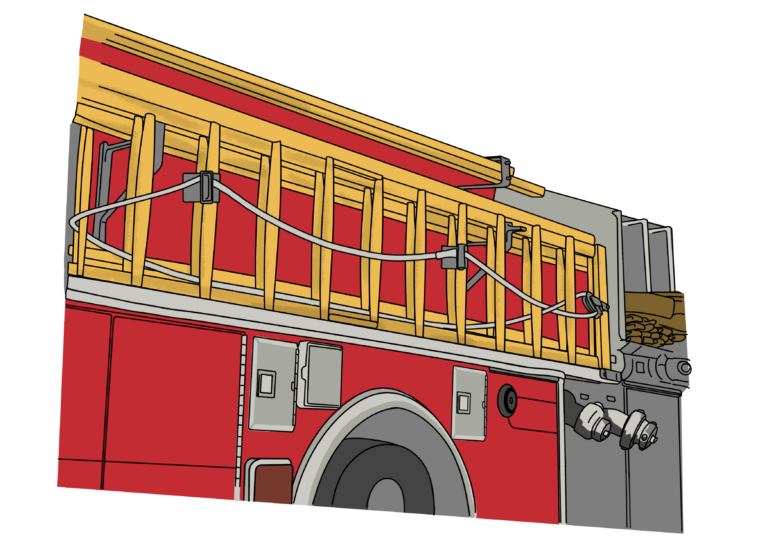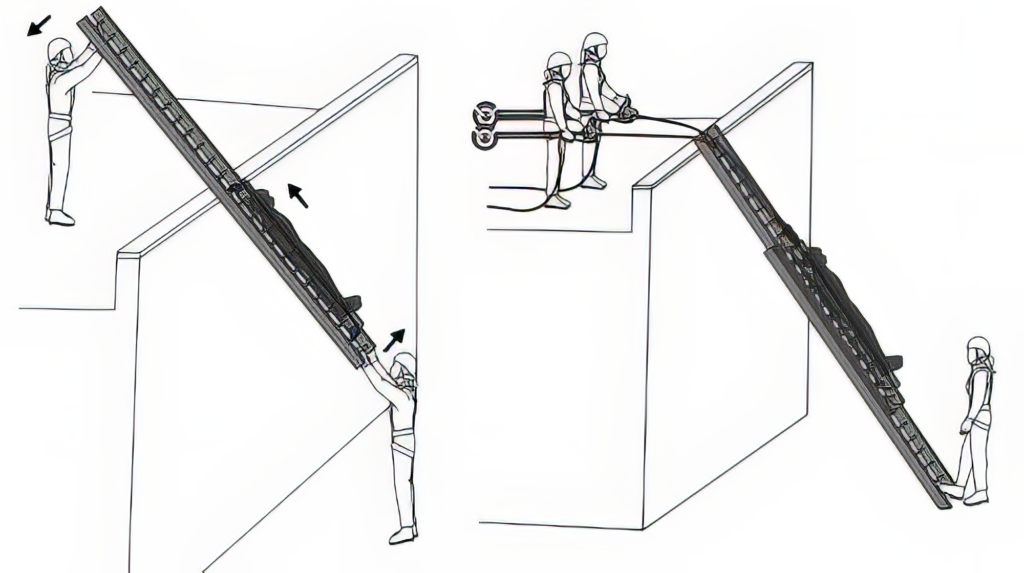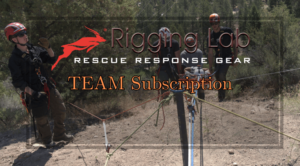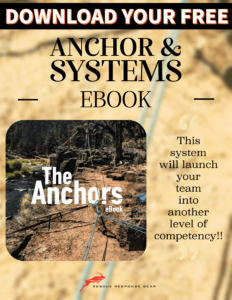Moving and Leaning Ladders in Rescue Operations
Moving and Leaning Ladders in rescue operations are essential tools in technical rescue operations, providing access, stability, and mechanical advantage in challenging environments. Beyond their conventional use, ladders play a crucial role in patient movement, high-rise rescues, and navigating confined spaces. The NFPA 1006: Standard for Technical Rescue Personnel Professional Qualifications (2021) sets the framework for the safe and effective use of ladders in these specialized applications, ensuring that rescuers are trained to employ them correctly in demanding scenarios.
Moving Ladders (Slides)
Using ladders as slides is a valuable technique when moving Stokes baskets over uneven terrain, across gaps, or down inclines. This method provides a controlled descent and minimizes excessive lifting, reducing rescuer fatigue and patient movement.
Technique:
- Position the ladder as a slide path, ensuring it spans the intended area without excessive flex.
- Secure the ladder at both ends to prevent shifting.
- Use a Stokes basket with patient packaging secured according to NFPA 1006 standards.
- Guide the litter down using a rope system, maintaining control over the movement.
Applications:
- Steep slope rescues where traditional lowering systems may not be feasible.
- Urban rescues involving gaps between structures or debris fields.
- Water rescues where a ladder serves as a stable transition platform.
Exterior Leaning Ladders
Exterior leaning ladders provide a reliable means of access and evacuation in high-rise rescue scenarios. They serve as temporary egress points, ventilation access, or even as anchor points for rigging systems.
Setup Considerations:
- Select a ladder rated for the load requirements outlined in NFPA 1006.
- Secure the base to prevent kick-out, using rope ties or a firefighter’s foot lock.
- Lean the ladder at a 75-degree angle, optimizing stability and load distribution.
- Use additional bracing or guy lines in adverse conditions such as high winds.
Advantages:
- Provides immediate access to upper floors in fire or collapse scenarios.
- Serves as a structural aid for rope rescue and belay operations.
- Allows patient extraction when elevators or interior stairways are inaccessible.
Interior Leaning Ladders
In confined space rescues or structural collapse scenarios, interior leaning ladders offer critical support when standard access points are compromised. These ladders provide both vertical and inclined access, assisting in victim extrication from stairwells, tunnels, and void spaces.
Deployment Considerations:
- Use short extension ladders for stability in narrow environments.
- Anchor the ladder securely at both the base and top to prevent slipping.
- Position the ladder at an angle that accommodates patient movement.
- Implement belay systems for additional safety, following NFPA 1006 protocols.
Use Cases:
- Damaged stairwells where traditional access routes are unsafe.
- Industrial rescues requiring maneuverability in confined environments.
- Subterranean rescues involving access into basements, tunnels, or vaults.
Conclusion
Ladders in rescue operations extend far beyond simple climbing tools—they are integral to patient movement, structural access, and confined space rescues. Whether using a ladder slide to transport a patient, leaning ladders to create external access points, or deploying them within collapsed structures, these techniques align with NFPA 1006 standards for professional technical rescuers. Mastering ladder-based rescue applications ensures efficiency, safety, and the ability to adapt in high-risk environments.
See more Ladder Techniques in Rescue Operations
Peace on your Days
Lance











